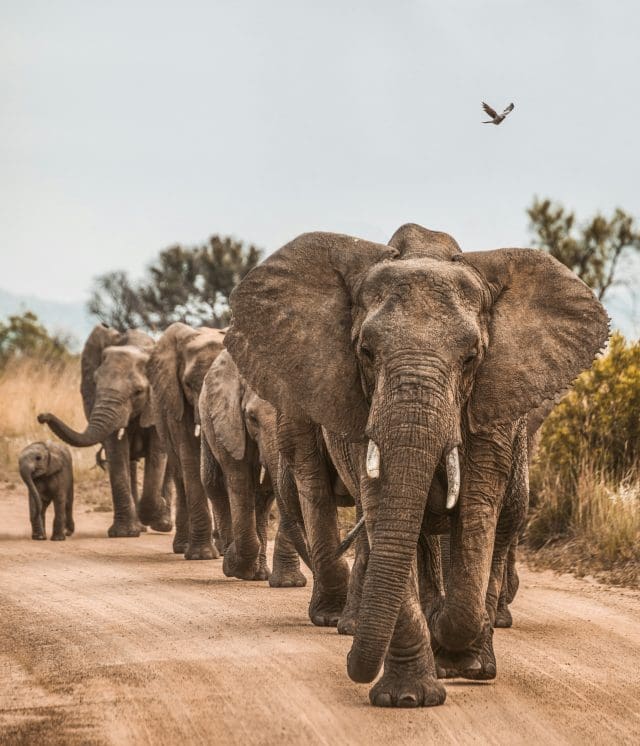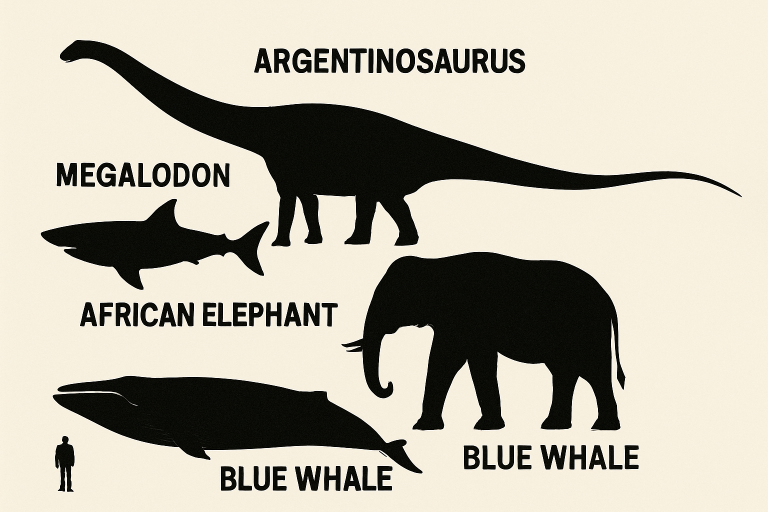
Earth has long been inhabited by awe-inspiring giants—massive animals that dominate their environments and ignite human fascination. From the towering dinosaurs of prehistory to modern-day elephants and whales, these creatures reflect nature’s grandeur and intricate design. For those curious about their origins and survival across the ages, various documentary series, such as those on Curiosity Stream, explore their evolution and enduring impact, offering an in-depth glimpse into the remarkable lives of the planet’s largest inhabitants.
The story of Earth’s most enormous beasts is one of adaptation, survival, and significance. These giants have become icons of scientific curiosity, cultural heritage, and environmental stewardship. By understanding their history and ongoing plight, we gain insight not just into the natural world but also into humanity’s responsibility to protect it.
Prehistoric Giants: A Glimpse into the Past
Millions of years ago, the world was inhabited by titanic beings whose fossils continue to fascinate scientists and the public alike. Among these behemoths, the Argentinosaurus stood as a true terrestrial colossus, possibly reaching 100 tons in mass. With its lengthy neck and towering presence, it dominated its Cretaceous landscape. Meanwhile, in ancient seas, the Megalodon reigned supreme. With teeth the size of a human hand, this gigantic shark preyed on whales and ruled the oceans for millions of years.
These massive species tell us about the conditions of prehistoric Earth—a far wilder planet with resources able to sustain such grandiose life. Fossils and sediment studies reveal not only how these giants lived but also the environmental changes that contributed to their eventual extinction, a sobering lesson for the fate of today’s giants.
Modern-Day Giants: Surviving Titans
Despite the passage of epochs, Earth remains home to huge animals. The African elephant, reaching 14,000 pounds, is the undisputed giant of the savanna. Its ecological role as a keystone species—shaping landscapes, creating water holes, and dispersing seeds—makes its continued survival essential for many other species.
In the ocean, the blue whale dwarfs all others. Stretching over 100 feet and weighing as much as 200 tons, it is the largest animal that ever lived. Despite their size, these majestic creatures are vulnerable, facing threats from ship strikes, pollution, and changing ocean temperatures.

Conservation Efforts: Protecting the Giants
Around the world, urgent and innovative conservation measures are being implemented to safeguard these extraordinary species from extinction. Efforts include robust anti-poaching legislation, creating and expanding protected areas, and active habitat restoration. Enhanced surveillance and ranger patrols have reduced poaching rates in Africa, providing hope for elephant populations. Cross-border collaborations are vital in species recovery, especially where migration routes span political boundaries.
Community education and involvement are now considered critical. Programs that involve local communities in conservation create incentives for protection, fostering a culture of stewardship rather than exploitation.
Technological Advancements in Studying Giant Animals
Modern technology has fundamentally changed how scientists study and protect Earth’s giants. Satellite tracking collars, for example, allow researchers to follow elephants and other large mammals across vast territories, gathering important data on movement patterns, habitat use, and threats. In the deep oceans, acoustic tags help track elusive blue whales and understand their migration paths.
Genetic testing and bioinformatics also play key roles in conservation. Studying DNA helps monitor genetic diversity within populations—a critical indicator of species’ long-term survival prospects. These advances aid scientists and inform public policy and international agreements for endangered species.
Cultural Significance of Giant Beasts
The influence of Earth’s giants extends beyond biology into culture and myth. Across Asia, elephants are symbols of wisdom and power, revered in religious rituals and royal traditions. In the West, fossilized remains of dinosaurs are thought to have inspired legends of dragons and other mythical creatures, shaping folklore for countless generations.
Contemplating these behemoths in art, religion, and storytelling reveals our enduring fascination and respect, frequently motivating collective efforts toward their conservation. This deep emotional connection underscores why preserving these creatures is not solely a scientific pursuit, but a cultural one.
Challenges Facing Earth’s Giants
Despite their formidable size, Giant Animals on Earth are acutely vulnerable to human activities. Habitat loss from agricultural expansion and urbanization reduces available space, fragmenting populations and disrupting migration pathways. Climate change brings additional stressors—altering food supplies, increasing droughts, and raising sea levels that impact terrestrial and marine ecosystems.
Illegal hunting remains a pervasive threat, particularly for animals targeted for tusks, horns, or meat. The loss of these giants often triggers cascading ecological effects, undermining biodiversity and the stability of entire habitats. The race to save these titans grows increasingly urgent as humanity’s footprint expands.
Giant Animals Conclusion
The story of Earth’s giants is one of awe, danger, and hope. These remarkable animals are the legacy of deep evolutionary time and stewards of the ecosystems they inhabit. With advances in science, growing global awareness, and cultural reverence, there remains a window of opportunity to ensure these giants continue roaming, swimming, and inspiring. By learning from the past, acting in the present, and inspiring future generations, we can help safeguard Earth’s irreplaceable giants for years.



